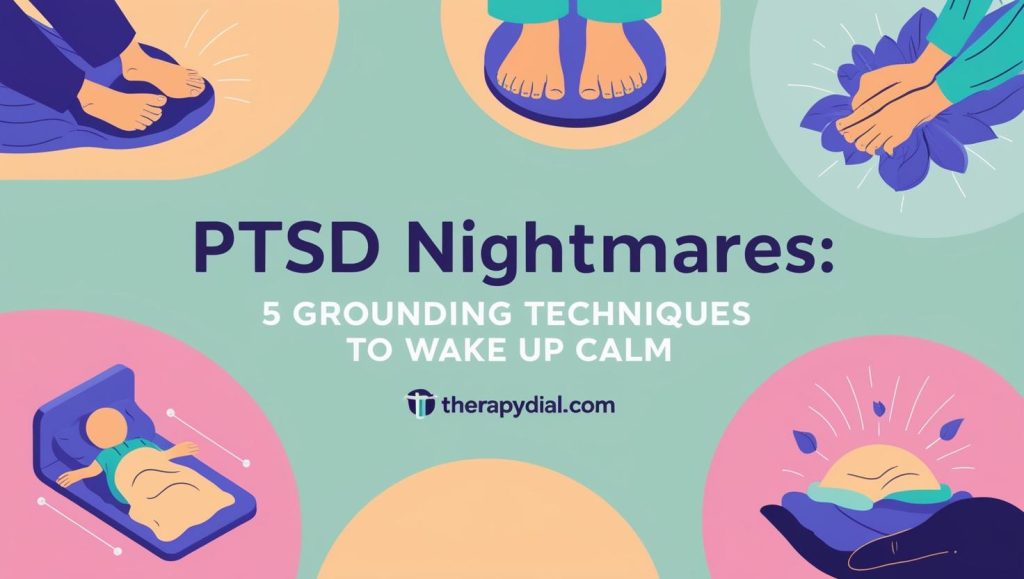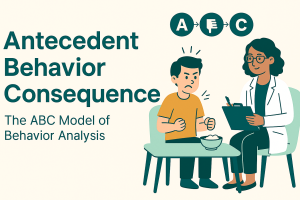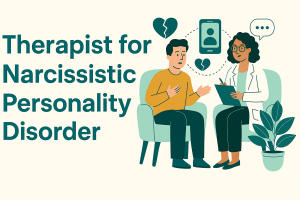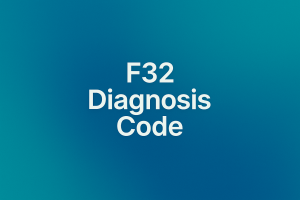Living with PTSD is already a battle on its own, but when the trauma invades your sleep in the form of relentless nightmares, it’s like fighting a war you never asked to be in—even while resting.
These dreams aren’t your usual oddball tales your brain churns out at 2 a.m.; they’re vivid, haunting replays of past trauma that leave you gasping for air.
But there’s hope. This article walks you through grounding techniques—simple, powerful methods to ease your mind and body back into calm after a nightmare strikes.
Let’s dive into the world of PTSD nightmares, understand their impact, and explore five grounding techniques that can truly help you reclaim peaceful sleep.
Understanding PTSD Nightmares
What Are PTSD Nightmares?
PTSD nightmares are vivid, emotionally intense dreams that often replay traumatic events or carry elements of them. Unlike regular dreams that may seem random or nonsensical, PTSD nightmares feel terrifyingly real.
They frequently involve themes of helplessness, threat, or reliving an actual trauma, and can cause physical symptoms like sweating, increased heart rate, and even screaming.
What’s particularly difficult about PTSD nightmares is that they can re-traumatize a person night after night, making sleep feel unsafe. According to National Institute of Mental Health (NIMH), nightmares are a core symptom of PTSD and can significantly worsen the overall condition.
Individuals may dread going to bed or develop sleep disorders like insomnia because of these recurring bad dreams.
Waking up from a PTSD nightmare often leaves you disoriented, anxious, and emotionally raw, making it crucial to know how to ground yourself immediately afterward.
How PTSD Nightmares Differ from Regular Nightmares
Think of regular nightmares as a bad movie you didn’t sign up for. Scary, yes—but you often wake up and brush it off. PTSD nightmares, on the other hand, are like flashbacks that hijack your REM sleep.
They may not be exact replays of a traumatic event, but they carry the same fear, stress, and helplessness that was present during the real experience.
These nightmares tend to feel more intense and realistic than typical dreams. People often wake up soaked in sweat, with pounding hearts and a gripping sense of dread. And unlike regular nightmares, these don’t fade with time.
Instead, they often grow more entrenched, tied tightly to emotions and memories.
Another key difference? The emotional aftermath. Regular nightmares might give you the chills.
PTSD nightmares can ruin your entire day, especially if you wake up in full-blown panic. That’s why having a set of grounding tools is vital—it gives you a way to anchor yourself in the now.
Common Triggers That Lead to Nightmares in PTSD Sufferers
Not every night with PTSD brings nightmares, but certain triggers can make them more likely. These triggers aren’t always obvious, which is why understanding them is essential. Some of the most common include:
-
Stressful events: Arguments, work deadlines, or overwhelming situations can set off nightmare episodes.
-
Anniversaries of trauma: Your body keeps score, and it remembers traumatic dates even if you don’t consciously focus on them.
-
Certain foods and medications: Caffeine, alcohol, or even sleep aids can interfere with REM sleep and heighten dream intensity.
-
Media exposure: Watching violent movies or reading distressing news stories close to bedtime can re-ignite traumatic imagery.
-
Sleep deprivation: Ironically, avoiding sleep out of fear of nightmares increases your likelihood of having one when you do finally rest.
Avoiding triggers isn’t always possible, but recognizing them is the first step in mitigating their impact.
The Psychological Impact of PTSD Nightmares
Emotional Toll on Mental Health
You’re not just dealing with a bad night—you’re fighting for your mental health. PTSD nightmares can take a huge emotional toll. Night after night of waking up in terror breaks down your emotional resilience.
It can lead to anxiety, depression, and a heightened sense of vulnerability. Over time, your confidence in your own ability to feel safe, even in sleep, erodes.
People often feel ashamed of these nightmares, blaming themselves or believing they’re “overreacting.” This internalized stigma adds another layer of psychological stress, making recovery even harder. As your emotional battery drains, you might notice yourself withdrawing from friends, avoiding responsibilities, or spiraling into negative thought loops.
Getting help and applying coping strategies like grounding techniques can help rebuild emotional strength.
It’s about reconnecting with your sense of self, learning how to calm your mind, and realizing you’re not broken—you’re healing.
How Nightmares Disrupt Sleep Cycles
One nightmare can ruin a whole night’s sleep, but with PTSD, these episodes often repeat multiple times a week.
This persistent disturbance leads to fragmented sleep cycles, especially disrupting REM sleep—the phase where dreaming occurs.
Here’s what happens:
-
You enter a nightmare.
-
Your body panics and wakes you up.
-
Adrenaline surges, making it hard to fall asleep again.
-
Your sleep becomes shallow, interrupted, and less restorative.
Without consistent REM cycles, your body can’t process emotions properly. This disruption also affects memory consolidation and your ability to learn new things. Over time, the impact compounds.
You’re tired, emotionally unstable, and less able to handle daily stress—which further fuels your PTSD symptoms.
It becomes a vicious cycle that’s hard to break without intentional intervention.
Long-Term Effects of Sleep Deprivation in PTSD Patients
Chronic sleep deprivation due to nightmares can lead to a whole host of long-term health issues. We’re talking about:
-
Increased risk of heart disease and high blood pressure
-
Memory and concentration problems
-
Weakened immune system
-
Weight gain due to hormonal imbalance
-
Severe anxiety and depressive episodes
When your body is robbed of rest night after night, it begins to break down—physically, mentally, and emotionally.
That’s why mastering grounding techniques isn’t just helpful—it’s essential for healing and long-term survival.
Why Grounding Techniques Matter
What Is Grounding and How Does It Work?
Grounding is like your emergency brake during a PTSD spiral. It’s a coping strategy designed to pull your mind away from distressing memories or feelings and bring you back to the safety of the present moment.
Think of it as anchoring your ship during a storm—it doesn’t stop the waves, but it keeps you from being swept away.
The idea is simple: your brain is in panic mode, convinced you’re back in danger. Grounding techniques remind it that you’re safe now. They engage your senses or thoughts in a way that shifts your focus—so instead of drowning in fear, you’re naming colors in your room or feeling the texture of a blanket.
When used regularly, grounding can even help rewire your trauma responses. Your brain begins to learn: “Yes, that was scary—but I’m okay now.” That’s the power of staying present.
Benefits of Using Grounding for PTSD Nightmares
The biggest win? Immediate relief. When you wake up gasping and sweating from a nightmare, grounding offers a lifeline. It calms your body’s fight-or-flight reaction and gives your mind something tangible to latch onto.
But the benefits go deeper:
-
Reduces panic attacks: Especially the ones that hit right after waking.
-
Improves sleep quality: You’ll be more likely to fall back asleep if you’re not stuck in fear.
-
Builds emotional resilience: The more you practice grounding, the better you get at managing distress.
-
Empowers self-healing: It puts the power back in your hands—you’re not just waiting to be rescued.
According to Psychology Today, grounding is also useful beyond the moment—it helps train your brain to separate past trauma from present reality, which is huge for anyone navigating PTSD.
When and How to Use Grounding Techniques
Timing matters. Ideally, you’ll use grounding the moment you wake up from a nightmare. The sooner you intervene, the less likely your mind will spiral. But grounding can also be part of your bedtime routine—used proactively to calm anxiety before sleep.
How to use it effectively:
-
Pick a technique that fits your personality. Not everyone responds the same to every method.
-
Practice it when you’re calm. That way, it becomes muscle memory when you’re distressed.
-
Keep it simple. Complex steps are harder to follow when your brain is in fight-or-flight mode.
-
Pair it with breathing. Deep, steady breaths enhance the calming effects.
And always have a backup. What works one night might not work the next. That’s why we’re diving into five versatile techniques next.
5 Grounding Techniques to Wake Up Calm
1. The 5-4-3-2-1 Sensory Technique
This classic technique works like a charm when your brain is stuck in a fear loop. It helps reorient your mind by focusing on your five senses.
Here’s how it goes:
-
5 things you can see
-
4 things you can feel
-
3 things you can hear
-
2 things you can smell
-
1 thing you can taste
It sounds simple, but it’s powerful. You’re forcing your brain to look around, which is the opposite of focusing inward on trauma. The sensory inventory grounds you in the present by reminding you: “I’m here. I’m safe.”
Let’s say you wake up from a nightmare. Try this:
-
Look at the ceiling fan, your phone, a picture frame—anything in your room.
-
Feel the texture of your sheets, the pillow, your hair, your skin.
-
Listen to your breathing, distant traffic, or even the silence.
-
Smell your blanket or your pillowcase.
-
Taste a sip of water or even the inside of your mouth.
This technique is recommended by therapists worldwide, including trauma experts at Verywell Mind, for its effectiveness in calming the nervous system.
2. Deep Breathing and Progressive Muscle Relaxation
When you wake up in a panic, your body is flooded with adrenaline. One of the quickest ways to dial that down is through controlled breathing and muscle relaxation.
Start with box breathing:
-
Inhale for 4 seconds
-
Hold for 4 seconds
-
Exhale for 4 seconds
-
Hold again for 4 seconds
Repeat this cycle for about 2–3 minutes. Then move into progressive muscle relaxation:
-
Start at your toes—clench and hold the muscles tightly for 5 seconds.
-
Release and feel the tension leave.
-
Move up to your calves, then thighs, working your way to your face.
This combo works on two levels. The breathing slows your heart rate and reduces anxiety. The muscle work brings your focus to your body, pulling you out of your head.
Many therapists integrate this into trauma recovery plans because it reinforces the mind-body connection, which often gets fractured by PTSD.
3. Guided Visualization or Imagery
Visualization is like mental teleportation. When you’re fresh out of a nightmare, your body thinks you’re still in danger. So, paint a different scene in your mind.
Picture a place where you feel safe. It could be real or imagined—a cabin in the woods, a beach at sunset, or even floating in space. The key is detail.
Ask yourself:
-
What do you see? (e.g., ocean waves, pine trees, clouds)
-
What do you hear? (e.g., birds, wind, water)
-
What do you feel? (e.g., warm sand, cool breeze)
Try recorded guided meditations or apps like Insight Timer or Calm that offer specific PTSD-friendly content. These tools guide your mind away from trauma and into peace.
Visualization rewires your brain over time, making it easier to switch off fear and activate calm.
4. Touch-Based Grounding (Blankets, Cold Water, etc.)
Your body has a powerful memory. When you’re stuck in a traumatic loop, physical sensations can snap you back into reality. Touch-based grounding works by engaging your sense of touch to break the grip of a nightmare.
Some practical methods:
-
Weighted blankets: These provide deep pressure stimulation, which can reduce cortisol and increase serotonin levels—instantly calming your nervous system.
-
Cold water: Splashing cold water on your face or running your hands under a cold tap can jolt your body out of panic mode.
-
Fidget tools or textured objects: Keep a smooth stone, textured cloth, or beaded bracelet by your bedside. Run your fingers over them to redirect your thoughts.
-
Ice cubes: Holding an ice cube focuses your mind on the present moment while physically soothing an overheated panic state.
You can also try body scans—slowly becoming aware of how each part of your body feels against the bed or blanket. This draws your attention to the now, making it easier to fall back asleep.
According to Sleep Foundation, tactile input is especially helpful for trauma survivors because it engages the limbic system, where emotional memory resides. Touch tells your body: “You’re not in the trauma anymore—you’re here, and you’re safe.”
5. Affirmations and Positive Self-Talk
Your inner voice can either be a critic or a coach—and when PTSD nightmares strike, you need that voice to be your ally.
After a nightmare, negative thoughts often rush in: “Why can’t I get over this?”, “I’m broken”, or “I’ll never be okay.” Replacing those thoughts with calming affirmations can make a huge difference.
Try these affirmations:
-
“I am safe right now.”
-
“This feeling will pass.”
-
“I survived then, and I am healing now.”
-
“I have the tools to return to calm.”
-
“It was a nightmare, not my reality.”
Write these on sticky notes and place them near your bed or create a voice recording of yourself saying them. Listening to your own calm voice can be incredibly grounding.
Affirmations work because they counter the fear-based thoughts that PTSD injects into your mind. They’re not just feel-good phrases—they’re neurological rewrites. Each repetition strengthens a new, healthier pathway in your brain.
Combine affirmations with breathing or sensory grounding to double the calming effect. Over time, you’ll find these words becoming your new inner monologue—and that’s powerful healing.
Creating a Nighttime Routine to Reduce PTSD Nightmares
How Pre-Sleep Habits Can Influence Nightmares
What you do before bed matters more than you think. If your brain enters sleep already tense, you’re more likely to have nightmares. A structured, calming nighttime routine sets the stage for deeper, more peaceful sleep.
Start with consistency: Go to bed and wake up at the same time daily. This trains your circadian rhythm and makes REM sleep (the stage where nightmares occur) more predictable.
Avoid the following at least an hour before bed:
-
Screens and blue light: These suppress melatonin production.
-
Violent or emotional content: News, movies, or social media drama can embed negative thoughts.
-
Stimulants: Caffeine, nicotine, and even some herbal teas can keep your brain wired.
Instead, try:
-
A warm bath or shower
-
Journaling to release anxious thoughts
-
Soft music or white noise
-
Reading a comforting book
Creating a “winding down” ritual signals your body that it’s safe to rest, which lowers your stress hormones and prepares your brain for restorative sleep.
Tools and Apps That Can Help You Sleep Better
Technology can be a helpful ally when used right. There are several tools and apps designed specifically for trauma survivors or those battling nighttime anxiety.
Here are a few worth trying:
-
Calm – Offers guided meditations, sleep stories, and breathing exercises.
-
Insight Timer – Features PTSD-specific sleep meditations and trauma-informed teachers.
-
Headspace – Known for its user-friendly design and soothing voice guides.
-
Smart Sleep Lights – Devices like the Hatch Restore gradually dim or brighten to mimic natural light, aiding melatonin production.
-
Sleep-tracking devices – Tools like the Oura Ring or Fitbit can help you track REM sleep patterns and identify triggers.
Use these tools as part of your bedtime ritual—not as distractions, but as resources that gently lead you toward peace.
Foods, Supplements, and Herbs for a Calming Night
Your diet plays a role in how you sleep. Certain foods and supplements naturally boost sleep-inducing hormones like melatonin and serotonin.
Helpful foods before bed:
-
Bananas – High in magnesium and potassium, which help relax muscles.
-
Cherries – A natural source of melatonin.
-
Almonds – Packed with healthy fats and magnesium.
-
Oatmeal – Complex carbs can make you feel sleepy.
Supplements and herbs to consider:
-
Magnesium glycinate – Calms the nervous system and improves sleep quality.
-
L-theanine – Found in green tea, this amino acid reduces anxiety.
-
Melatonin – A sleep hormone, but best used short-term or under guidance.
-
Valerian root or chamomile – Herbal teas that promote calmness and relaxation.
Avoid anything too spicy, sugary, or heavy right before bed—they can raise your core body temperature or cause digestive discomfort, which disrupts sleep.
Always consult your healthcare provider before adding new supplements, especially if you’re already on medications for PTSD or anxiety.
When to Seek Professional Help
Signs Your PTSD Nightmares Need Clinical Attention
Grounding techniques are powerful tools—but they’re not a cure-all. Sometimes, nightmares are so frequent or intense that they require professional intervention. So how do you know when it’s time to seek help?
Here are some clear signs:
-
Nightmares occur almost every night
-
You dread sleeping and avoid it entirely
-
Your relationships or work are suffering due to fatigue or mood swings
-
You experience physical symptoms like panic attacks, high blood pressure, or chest pain
-
You feel hopeless or suicidal after waking from nightmares
If any of this sounds familiar, don’t wait. PTSD isn’t something you have to deal with alone. There are trained therapists and doctors who specialize in trauma and can guide you toward recovery. Nightmares are a symptom, not a weakness.
Seeking help is a sign of strength—it means you’re ready to reclaim your life and peace of mind.
Types of Therapy That Work for PTSD and Nightmares
There’s no one-size-fits-all approach to PTSD, but some therapies have shown exceptional results in treating trauma-related nightmares:
-
Cognitive Behavioral Therapy for Insomnia (CBT-I): Targets the thoughts and behaviors that interfere with sleep, proven effective for PTSD patients.
-
Imagery Rehearsal Therapy (IRT): Involves rewriting your nightmare while awake and “rehearsing” the new version to reduce its frequency.
-
Eye Movement Desensitization and Reprocessing (EMDR): Helps reprocess traumatic memories using guided eye movements.
-
Prolonged Exposure Therapy: Teaches you to gradually confront trauma memories in a safe, controlled way.
Medication can also play a role. Drugs like prazosin have been prescribed to reduce the intensity and frequency of PTSD nightmares.
Talk therapy, combined with grounding techniques and professional guidance, offers the best chance at sustained healing. Sites like TherapyDen or Psychology Today can help you find a therapist who understands PTSD.
Finding Support Groups and Online Communities
Healing becomes easier when you’re not doing it alone. Talking to others who get it—who have faced the same darkness and still keep moving forward—can be incredibly empowering.
Consider joining:
-
Reddit’s PTSD Community – Offers peer support and shared experiences.
-
DailyStrength PTSD Support Group – A forum to connect with others managing PTSD symptoms.
-
Facebook Groups for Trauma Survivors – Search “PTSD Support” or “Nightmare Recovery” to find active, moderated groups.
Support groups offer validation, tips, and emotional encouragement. Sometimes, just hearing someone say “me too” is enough to keep you going another day.
Self-Compassion and Healing After a Nightmare
Journaling and Expressive Writing for Nighttime Recovery
After a nightmare, writing can be the release your mind craves. Journaling allows you to externalize fear, giving it a name and shape—so it’s no longer just a formless monster in your head.
Use a trauma-sensitive journaling approach:
-
Write about how you felt during the nightmare.
-
Reflect on what triggered it (if known).
-
End with something positive—what you’re grateful for or something you’re proud of.
This process helps create emotional distance from the trauma. It also gives you a record of patterns and progress over time.
Apps like Journey or Day One are excellent if you prefer digital journaling. If paper feels more personal, keep a notebook beside your bed. Writing first thing after waking up helps you capture the raw emotion before it fades, which is incredibly therapeutic.
Practicing Self-Forgiveness and Patience
One of the hardest parts of PTSD is the guilt and shame that often come with it. You might think, “Why am I still haunted by this?” or “I should be over it by now.”
But trauma doesn’t follow a calendar.
Practicing self-forgiveness means recognizing that healing is a nonlinear process. Some nights will be rough. That doesn’t mean you’re failing—it means you’re human.
Try saying:
-
“It’s okay to not be okay right now.”
-
“I’m allowed to take as long as I need.”
-
“My progress isn’t erased by one bad night.”
PTSD recovery isn’t about perfection. It’s about showing up for yourself again and again, even when it’s hard. And each time you choose grounding, self-kindness, or reaching out for help—you win a little piece of peace back.
Celebrating Small Wins in the Healing Journey
Healing from PTSD nightmares is a marathon, not a sprint. So celebrate every single win:
-
A night with no nightmares
-
Waking up and grounding quickly
-
Writing about your experience
-
Telling someone how you feel
These might seem small, but they’re huge steps in your healing journey. Create a “recovery jar” and drop in notes about every little success. On tough days, go back and read them. You’ll see just how far you’ve come.
Progress builds on itself. And those small wins? They’re your foundation for a life no longer dominated by fear.
Conclusion
PTSD nightmares are brutal—but they don’t get to control you forever. With the right tools, mindset, and support, you can take back your nights and find peace again. Grounding techniques aren’t just hacks for the moment—they’re seeds of healing that grow stronger every time you use them.
Start tonight. Breathe. Touch something real. Say something kind to yourself. You are here, you are safe, and you are healing.
FAQs
1. Can PTSD nightmares ever go away completely?
Yes, for many people they lessen or stop altogether with the right therapy, medication, and coping strategies like grounding techniques.
2. What’s the difference between flashbacks and PTSD nightmares?
Flashbacks happen while you’re awake and feel like you’re reliving trauma. Nightmares occur during sleep and may be direct or symbolic replays of traumatic events.
3. Are grounding techniques safe for children with PTSD?
Absolutely. In fact, many grounding techniques—like deep breathing or touch-based grounding—are often used in child therapy for trauma.
4. How long does it take for grounding to work?
Some techniques work instantly (like cold water or breathing), while others become more effective with practice. It’s about building a habit.
5. Can medication stop PTSD nightmares?
Yes, certain medications like prazosin have been shown to reduce nightmare frequency. Always consult a healthcare provider for guidance.




